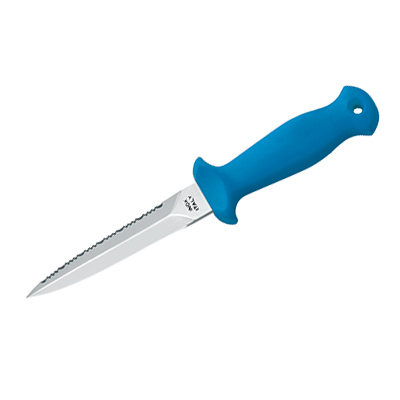Diving Knife

A diving knife is a type of knife specifically developed to meet the requirements of divers. The knife is supposed to help divers, especially in emergencies – getting tangled up in fishing lines, nets or ropes, for instance. Diving knives can also be used to generate an acoustic emergency signal. Older models had a metal butt that had to be banged against the pressure cylinder in order to generate the signal. Modern diving knives no longer have the metal butt as the blade is now intended to generate the signal. A less important function of a diving knife is that of a (defensive) weapon, since dangerous sea creatures, e.g. sharks, cannot be fought off effectively with a knife.
Diving knives are available in many different variations, though they all share common properties resulting from the typical uses of this type of knife. Generally speaking, diving knives are equipped with a non-slip handle. The handles of current models are shaped according to ergonomic principles in order to ensure a firm and secure grip. The blades of diving knives are mostly double edged with one edge being sharp and smooth, while the other is serrated and can cut through tougher materials. The serrated edge often has a small notch that helps with cutting lines and ropes. Diving knife blades are usually made from special steel since most high-grade steel types, even the stainless ones, are corroded in saltwater. Ceramic and titanium blades are sometimes offered as steel alternatives. While non-corrosive ceramic materials break much more easily than stainless steel, titanium is just as robust as stainless steel but much more corrosion-resistant. Both materials are more expensive than stainless steel.
Most diving knives are secured in a sheath with two attached straps. Depending on the size of the knife, the sheath is supposed to be attached to the lower leg or forearm.
